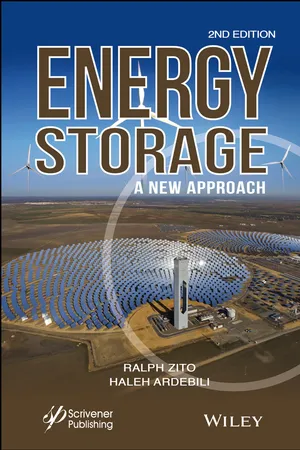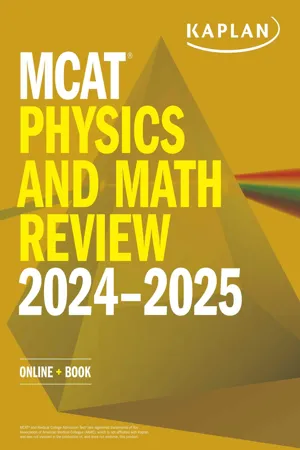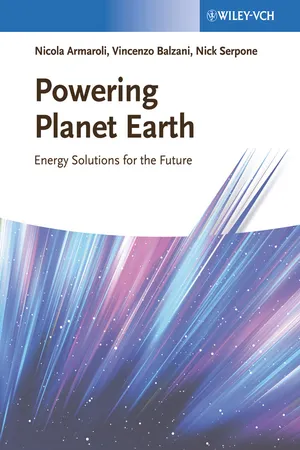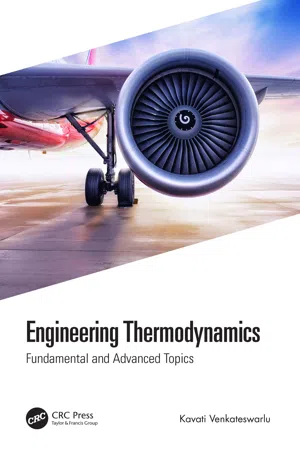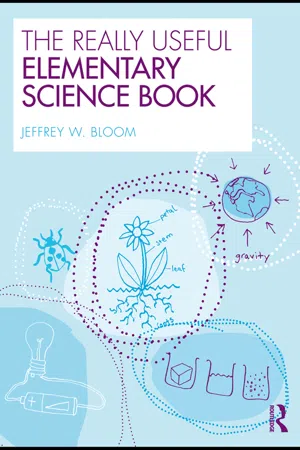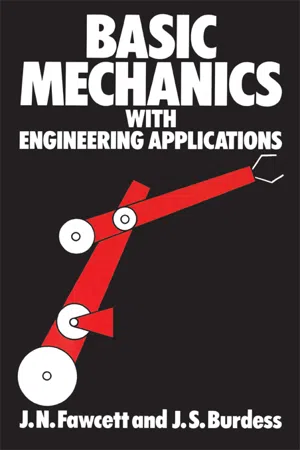Physics
Work and Energy
Work and energy are fundamental concepts in physics. Work is the transfer of energy that occurs when a force is applied to an object and it moves in the direction of the force. Energy is the ability to do work and is classified into different forms such as kinetic, potential, and thermal energy. These concepts are essential for understanding the behavior of physical systems.
Written by Perlego with AI-assistance
Related key terms
12 Key excerpts on "Work and Energy"
- eBook - ePub
Energy Storage
A New Approach
- Ralph Zito, Haleh Ardebili(Authors)
- 2019(Publication Date)
- Wiley-Scrivener(Publisher)
The history of the development of physical concepts is not the prime concern here, but some knowledge of their evolution does serve to bring more closely to our attention and scrutiny a better appreciation of terms that we employ daily. Sometimes it is necessary to begin understanding or developing a body of knowledge in order to make certain basic assumptions on an entirely intuitive basis. As scientifically unsatisfying as that may be, it is unavoidable at times. One could draw a weak comparison to plane geometry (Euclid) with regard to its various axioms and the declaration that parallel lines never meet. Even the concept of straight lines is rather intuitive in nature.Perhaps the best definition is that a force is required to change the motion of a body. Many problems arise in finding acceptable definitions for the basic parameters of physical science, namely, the abstract concepts of mass, time, force, and energy. However, we must learn to be satisfied with definitions that leave something to be desired in order to move on toward generating a working body of mechanics that enables us to design and build practical devices that serve our purposes.An interesting definition of energy comes from the Grolier Encyclopedia, which states:Energy can be measured in terms of mechanical work, but because not all forms of energy can be converted into useful work, it is more precise to say that the energy of a system changes by an amount equal to the net work done on the system … In classical physics, energy, like work, is considered a scalar quantity; the units of energy are the same as those of work. These units may be ergs, joules, watt-hours, foot-pounds, or foot-poundals, depending on the system of units being used. In modern science, energy and the three components of linear momentum are thought of as different aspects of a single four-dimensional vector quantity, much as time is considered to be one aspect of the four-dimensional space-time continuum … Energy exists in many different forms. The form that bodies in motion possess is called kinetic energy. Energy may be stored in the form of potential energy, as it is in a compressed spring. Chemical systems possess internal energy, which can be converted by various devices into useful work; for example, a fuel such as gasoline can be burned in an engine to propel a vehicle. Heat energy may be absorbed or released when the internal energy of a system changes while work is done on or by the system. (1993) - eBook - ePub
- A. L. Stanford, J. M. Tanner(Authors)
- 2014(Publication Date)
- Academic Press(Publisher)
5Work, Power, and Energy
Publisher Summary
This chapter discusses physical quantities and concepts necessary for the understanding of energy and its associated conservation principle. In the nonscientific world, work is often thought of in terms of some physical or mental effort. In physics, however, the term work is defined precisely. Doing work requires the use of force, and work on a body does not take place without displacement of that body. The rate at which work is done is often of interest in practical applications. Power is the measure of the rate at which work is being done. It is sometimes convenient to express power in terms of a constant force acting on an object moving at a constant velocity. A unit commonly used for measuring electrical power is the kilowatt . A particle or a system of particles that has the capacity to do work is said to possess energy, a physical quantity associated with the particle or system that may take many forms. In the technical sense, however, a system that has the ability to do work is said to have energy. Energy is a scalar quantity that is usually expressed in terms of the same units as those of work.This chapter introduces one of the most important and perhaps the most far-reaching of all principles in the sciences—the conservation of energy. A conservation principle is a rule or a natural law that specifies that the value of a physical quantity does not change during the course of a physical process but remains constant. The quantity that does not change is said to be conserved. The simplicity of conservation principles makes them concise expressions of natural law and powerful tools of scientific analysis. Conservation of energy is only one of a number of conservation principles that students of science or engineering will encounter. The significance and the usefulness of these principles should become apparent to the student as they are used to analyze and interpret physical phenomena. - No longer available |Learn more
MCAT Physics and Math Review 2024-2025
Online + Book
- (Author)
- 2023(Publication Date)
- Kaplan Test Prep(Publisher)
Chemical and Physical Foundations of Biological Systems section. We also covered the application of energy and work with simple machines, such as levers, inclined planes, and pulleys. These devices assist us in accomplishing work by reducing the forces necessary for displacing objects.Preparing for the MCAT is hard (mental) work, but you are well on your way to achieving success on Test Day. This MCAT Physics and Math Review book (and all the materials provided in your Kaplan program) is part of a set of tools—your simple machines, if you will—that will provide you with the mechanical advantage to ease your efforts toward a higher score.GO ONLINE
You’ve reviewed the content, now test your knowledge and critical thinking skills by completing a test-like passage set in your online resources!CONCEPT SUMMARY
Energy
- Energy is the property of a system that enables it to do something or make something happen, including the capacity to do work. The SI units for all forms of energy are joules (J).
- Kinetic energy is energy associated with the movement of objects. It depends on mass and speed squared (not velocity).
- Potential energy is energy stored within a system. It exists in gravitational, elastic, electrical, and chemical forms.
- Gravitational potential energy is related to the mass of an object and its height above a zero-point, called a datum
- eBook - ePub
Powering Planet Earth
Energy Solutions for the Future
- Nicola Armaroli, Vincenzo Balzani, Nick Serpone(Authors)
- 2012(Publication Date)
- Wiley-VCH(Publisher)
“the power, virtue, and efficacy of a thing.”If we’ve come to understand the notions of what energy is and what laws and principles govern it, it is mostly thanks to the passionate and prolific insights of a small group of curious men that, since the end of the eighteenth century, dedicated much of their time to this problem: men such as James Watt, Sadie Carnot, Justus von Liebig, James Joule, Rudolf Clausius, William Thompson (better known as Lord Kelvin), Ludwig Boltzmann, Walther Nernst, and Albert Einstein.Energy and Related Terms
The concept of energy is not immediately definable. Before we attempt to understand what energy is, we need to define another concept that precedes it: work .Work can be described as the use of a force to move something. The amount of work depends on how much force is used and the distance the object is moved to. From a mathematical point of view, work is the product of force × distance .We do work when we lift a weight against the force of gravity, such as, for example, lifting a crate of apples. The magnitude of the work needed depends on the mass being moved (how many apples are there in the crate?), the magnitude of the gravitational force (whether we’re on Earth or on the Moon) and the height to which we want to lift the object to: on the table? – on the shelf above?Often the mass may be that of our bodies: for example, we do work when we climb the stairs or a ladder. Since the force of gravity is identical in the Italian regions of Valle d’Aosta and Abruzzo, and the mass to be moved is constant over the years (provided we maintained our figure), greater work will be needed to climb to the top of Mont Blanc, 4810 meters, than to climb to the top of the Gran Sasso at 2912 meters in the Apennine mountain chain of Italy. - No longer available |Learn more
- Robert A. Pelcovits, Joshua Farkas(Authors)
- 2023(Publication Date)
- Barrons Educational Services(Publisher)
We have discussed qualitatively how the sign of work is related to the change in an object’s speed (forces that exert positive work increase speed, forces that exert negative work decrease speed, and forces that exert zero work do not affect speed). Now we would like to define this relationship mathematically. We start with the definition of work and integrate to obtain the total work:If the net force is not constant, we must first express the integrand in terms of one variable and its own differential (this is similar to separating variables when solving air resistance problems in the last chapter). In this case, the manipulations are a little more tricky:Rearranging, Now the right side is ready to integrate: It is composed of two integrands, each of which is defined by a different variable and its own differential.Given the definition of speed as , this can be rewritten asWe are thus led to define a new quantity, the kinetic energy:Definition of kinetic energySimilar to work and other forms of energy, kinetic energy has units of joules (J = N · m = kg · m2 /s2 ).Work–Kinetic Energy Theorem
Now we can appreciate the physical significance of work rather than viewing it simply as a mathematical definition: Work is the change in an object’s kinetic energy due to the action of a given force.Work–kinetic energy theoremThis is the first and most fundamental of a number of equations we will soon derive relating various types of Work and Energy. This theorem is a restatement of Newton’s laws, and it is always valid.TIP This theorem is another way of stating Newton’s second law.Example 4.2A force acts on an object of mass 2 kg as it moves from x = 0 to x = 5 m. Given that the object is at rest at x = 0,(a)Calculate the net work. (b)What is the final speed of the object?Solution(a)(b)Conservative and Nonconservative Forces
The Law of Conservation of Energy
Energy is never created or destroyed; it merely changes form. The total energy of an isolated system is constant when all forms of energy are accounted for (e.g., sound, light, heat, KE). - eBook - ePub
Engineering Thermodynamics
Fundamental and Advanced Topics
- Kavati Venkateswarlu(Author)
- 2020(Publication Date)
- CRC Press(Publisher)
In engineering thermodynamics, the focus will be on work-producing devices such as internal combustion engines and turbines. Hence, it is always suitable to consider such work as positive. That is, the work done by the system is positive, and the work done on the system is negative. In certain cases, however, it is convenient to regard the work done on the system to be positive. To reduce the possibility of misunderstanding in any such case, the direction of energy transfer is shown by an arrow on a sketch of the system, and work is regarded as positive in the direction of the arrow. It is necessary to know how the force varies with the displacement. This brings out an important idea about work.3.8 First Law of Thermodynamics
The first law of thermodynamics (conservation of energy principle) establishes the relationships among the various forms of energy and energy interactions such as heat Q and work W during a process. The first law of thermodynamics states that energy is neither created nor destroyed during a process; it gets transformed from one form to the other. When an electrical energy is supplied to a motor, it will rotate a pump circulating the fluid. In this case, electrical energy is converted to kinetic energy (rotation of the shaft). A speeding vehicle possesses kinetic energy, if the brake is applied it comes to rest slowly and at rest, it possesses potential energy. The loss in kinetic energy equals the increase in potential energy when the air resistance is negligible, thus confirming the conservation of energy principle for mechanical energy.The conservation of energy principle can be demonstrated with the help of the processes that involve either heat or work interactions or simultaneous heat and work interactions as well. In one case, we consider a process that involves heat transfer but no work interactions such as heating of a metal bar in a furnace. Owing to heat transfer to the metal bar, its energy increases. The increase in the total energy of the metal bar will be equal to the amount of heat transferred to it. Similarly, in the case of heating of water in a steam boiler, if 100 kJ of heat is transferred to the water from the furnace and 10 kJ of it is lost from the water to the ambient surroundings, the increase in energy of the water becomes equal to the net heat transfer to water, i.e., 90 kJ. - eBook - ePub
- Jeffrey W. Bloom(Author)
- 2010(Publication Date)
- Routledge(Publisher)
This loss of energy to systems is important in our understandings of energy in ecological systems, which was discussed in Section 3. Work and Power Work, from a physics perspective, involves using energy to apply a force to move some object a specific distance. Work equals force times distance: (W = f × d). The most common unit that is used for work is a joule, named after James Joule (1818–1889), a British physicist: 1 joule = the force of 1 Newton applied over a distance of 1 meter. Work is involved in our walking and running, in driving, moving furniture, lifting weights, and all kinds of activities that require moving some sort of object a distance in some direction. • Example: You push a box 5 m across the floor using a 20 Newton force: REMEMBER: 1 Newton = mass × 1 m/sec 2 20 N × 5 m = 100 joules Let’s say this took you 6 seconds to complete. If you repeated this task in 3 seconds, it will still be the same amount of work, but you will have used twice as much power, which brings us to the next concept. Power has to do with increasing the speed at which work is done. The term watt (named after James Watt, a Scottish inventor 1736–1819) is used as the unit for power that has to do with the speed with which work is done. Although we commonly associate the term “watt” with the power of light bulbs, it is the scientific term used for power in general. The other term commonly used to describe power, especially in cars and tools with motors, is horsepower. Interestingly, the term “horsepower” was also coined by James Watt. He found that when experimenting with horses, his horses were able to pull 22,000 lb of coal the distance of 1 ft in 1 minute, but later changed it to 33,000 ft-pounds per minute. One horsepower is equivalent to the electrical horsepower of 746 watts - eBook - ePub
Biomechanics of Dance
Applications of Classical Mechanics
- Melanie Lott(Author)
- 2023(Publication Date)
- De Gruyter(Publisher)
7 Energy While playing tennis with a friend, a dancer becomes winded and needs a break. She gets a drink of water and wonders, “Why do I feel so out of breath? I thought I was in good shape from all my dance classes.” While back on the court, she pays attention to what her body does and thinks about her physics class. She serves the ball, then runs to one side of the court to return her friend’s shot, and finally sprints forward hitting a volley over the net to win the point. In physics she is learning about Work and Energy and thinks to herself, “If I started at rest before serving the ball, then I ended at rest after hitting my last shot, my total change in kinetic energy was zero. Doesn’t that mean the total work done was zero?! But I sure felt my muscles working hard!” She also realizes that her total change in gravitational potential energy was zero since the tennis court is flat and she started and ended with her center of mass at the same height. “Energy is confusing,” she thinks. Then she remembered her physics professor explaining that the combination of kinetic energy and potential energy was called mechanical energy, but that there were also other forms of energy like thermal energy and chemical energy. She resolves to ask her professor about it, but for now she’ll get her mind back in the tennis game. This dancer is certainly not alone in finding energy confusing. As scalar quantities, Work and Energy can be mathematically simpler than forces and torques, however, energy is a conceptually challenging topic. For one thing, it is very difficult to give a satisfying definition of energy. Additionally, students are told that energy is conserved, but then sometimes it’s not. The law of conservation of energy is a fundamental physical principle, and states that the total energy of an isolated system remains constant. An isolated system is one in which no energy is exchanged between the system and environment (anything not included in the system) - eBook - ePub
Newtonian Dynamics
An Introduction
- Richard Fitzpatrick(Author)
- 2021(Publication Date)
- CRC Press(Publisher)
CHAPTER 5 Conservation of Energy DOI: 10.1201/9781003198642-5 5.1 Introduction Nowadays, the conservation of energy is undoubtedly the single most important idea in physics. Strangely enough, although the basic idea of energy conservation was familiar to scientists from the time of Newton onward, this crucial concept only moved to center stage in physics in about 1850 (i.e., when scientists first realized that heat was a form of energy). According to the ideas of modern physics, energy is the fundamental substance that makes up all things in the universe. Energy can take many different forms; for instance, potential energy, kinetic energy, electrical energy, thermal energy, chemical energy, nuclear energy, etcetera. In fact, everything that we observe in the world around us represents one of the multitudinous manifestations of energy. There exist processes in the universe that transform energy from one form into another; for instance, mechanical processes (which are the focus of this book), thermal processes, electrical processes, nuclear processes, etcetera. However, all of these processes leave the total amount of energy in the universe invariant. In other words, whenever, and however, energy is transformed from one form into another, it is always conserved. For a closed system (i.e., a system that does not exchange energy with the rest of the universe), the previous law of universal energy conservation implies that the total energy of the system in question must remain constant in time. 5.2 Energy Conservation During Free-Fall Consider a mass, m, that is falling vertically under the influence of gravity. We already know how to analyze the motion of such a mass. Let us employ this knowledge to search for an expression for the conserved energy during this process. (Note that this is clearly an example of a closed system, involving only the mass and the gravitational field.) The physics of free-fall under gravity is summarized by the three equations (2.16)–(2.18) - eBook - ePub
- Sir James H. Jeans(Author)
- 2013(Publication Date)
- Dover Publications(Publisher)
143. The kinetic energy of a system of bodies is obviously equal to the sum of the kinetic energies of the separate particles. The potential energy of the system, as has been seen, is the sum of the potential energies of its particles.Thus the total energy of a system is equal to the sum of the total energies of the separate particles. Since the total energy of each particle remains constant, it follows that the total energy of the system remains constant.The fact that the total energy remains constant is spoken of as the Conservation of Energy. An equation expressing that the total energy at one instant is equal to that at any other instant is spoken of as an equation of energy.144. As an illustration, let us consider the firing of a stone from a catapult.Work is performed in the first place in stretching the elastic of the catapult, and the work is stored as potential energy of the stretched elastic. As soon as the catapult is released, the stone is acted on by the tension of the elastic ; the stone moves under the accelerating influence of this tension, and the tension of the elastic slackens. While this is in progress the stone is acquiring kinetic energy, while the stretched elastic is losing potential energy. By the theorem just proved, the kinetic energy gained by the stone must be just equal to the potential energy lost by the elastic.When the stone escapes from the catapult, most of the potential energy of the elastic will have disappeared, having been transformed into the kinetic energy of the stone. After this a further transformation of energy may take place while the stone is in motion. If the stone moves upwards, its potential energy will increase, so that there must be a corresponding decrease in its kinetic energy — its speed must slacken. On the other hand, if the stone moves downwards, the potential energy will decrease, so that its kinetic energy will increase — it will gain in velocity. - eBook - ePub
- J Jones, J Burdess, J Fawcett(Authors)
- 2012(Publication Date)
- Routledge(Publisher)
5Work and EnergyBasic TheoryWe have shown in Chapter 4 how the behaviour of systems can be analysed by the direct application of Newton’s Laws of Motion. An alternative approach, based on the First Law of Thermodynamics, will now be considered which can, in certain circumstances, provide a simpler and quicker analysis.5.1 Work done by a forceFigure 5.1 shows a force F applied to a point P in a mechanical system S.We will suppose that when the force F is applied P undergoes a displacement δr and moves to P′. It is assumed that the direction of F and δr are inclined to one another at an arbitrary angle θ, as shown in Fig. 5.2 .Let us assume that the displacement from P to P′ is given by a displacement δr cos θ along the line of action of F from P to Q, followed by a displacement δr sin θ, perpendicular to the line of action of F, from Q to P′. Because the point P has been displaced from P to P′ by the force F we say that work has been done on the system by the externally applied force. The amount of work, δW, done by the force during this displacement is a scalar quantity defined bywhere F is the magnitude of the force and δr cos θ is the displacement of the point of application of F measured in the direction of F.FIG . 5.1FIG . 5.2From this definition and from Fig. 5.2 it can be seen that no work is done by the force when its point of application is displaced along a direction which is perpendicular to its line of action, i.e. no work is done during the displacement from Q to P′.It also follows from eqn (5.1) that the work done will be positive provided the displacement δr cos θ is in the same direction as the force F. If the displacement of P along the line of action of F is in the opposite direction from that of the force, as shown in Fig. 5.3 , the work done is negative. In this case we say that work has been done by the system S on the system which is applying the force.FIG - eBook - ePub
- Robert Lambourne(Author)
- 2019(Publication Date)
- CRC Press(Publisher)
Classical physics of matter ), but as far as force and motion are concerned it implies that when mechanical energy is not conserved in an isolated system (due to the action of a non-conservative force such as friction) the mechanical energy that is ‘lost’ always reappears in some other form (such as thermal energy), elsewhere in the system.3.8 The role of energy in predicting motionThe last subsection included an example of the way in which energy can be used to predict the speed of a body. Similar calculations, based on the conservation of mechanical energy, can be carried out in many situations. It is always the case that the same information may be obtained by considering the relevant forces, formulating the appropriate equation of motion and solving it. However, the force-based approach can easily become very complicated, whereas the energy-based approach is generally much simpler if it can be applied. Energy is therefore of great practical value in the prediction of motion.An example of this is the one that was mentioned at the start of this chapter, the calculation of the minimum speed with which a projectile must be launched if it is to escape completely from the Earth. Provided we ignore air resistance, the calculation of this escape speed, v escape , is pretty straightforward since it may be based on the conservation of mechanical energy. Using Equation 2.25 to evaluate the projectile’s potential energy at the launch site (where r = R E
Index pages curate the most relevant extracts from our library of academic textbooks. They’ve been created using an in-house natural language model (NLM), each adding context and meaning to key research topics.
